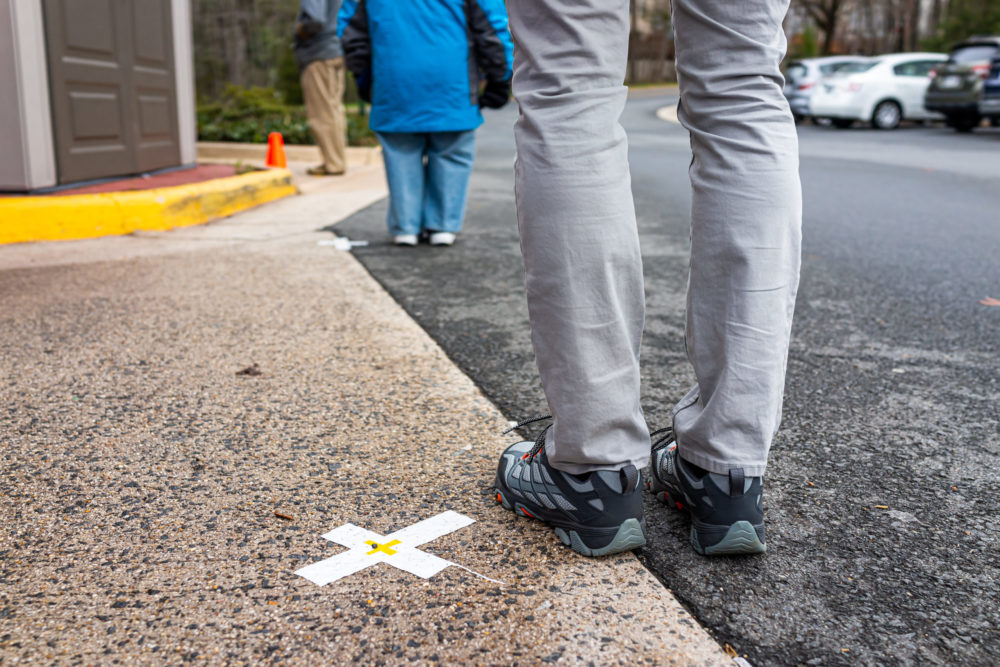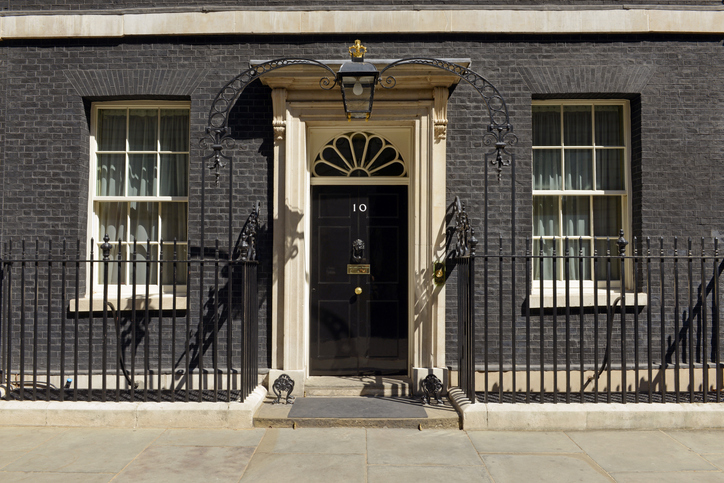The British Retail Consortium (BRC) has outlined social distancing recommendations for shops once we start coming out of lockdown.
They stress that it’s the responsibility of the business to decide what social distancing measures they’re going to implement based on what’s appropriate. Business owners should also be communicating with colleagues to reassure them of their safety within their roles.
Measures suggested below should be implemented alongside safety requirements like the Health and Safety at Work regulations.
Social distancing in and around stores
Outside store
- Limit number of entry and exit points into and out of store. Consider having separate entrance and exit points if possible.
- Limit the number of customers in the store at any time. Assess the size of the store and its layout, this will enable you to calculate the number of customers who can reasonably follow 2m social distancing.
- Consider whether temporary barriers should be available in case it is necessary to stop people joining a queue.
- Place clear signage outside of the store explaining the social distancing measures in place that customers should follow.
- Place markings outside the store to assist correct queue spacings.
- Speak to nearby premises to work together to manage possible shared queuing areas.
- Consider non-contact stock deliveries.
- Businesses in shopping centres should discuss queue management with centre management to determine the best way to avoid congestion.
- Consider whether additional security staff may be required to support staff.
Inside Store
Hygiene and cleaning
- Provision of cleaning stations at the front of store including hand sanitiser (if available) and disinfectant wipes or spray and tissue for trolley/basket handles.
- Identify and regularly clean key touch points e.g. door handles, lift buttons, keypads, stair/escalator handrails.
>See also: What coronavirus small business help is available for free?
Social Distancing
General
- Consider what steps will be taken by managers and staff where customers are not following social distancing measures.
Shop floor and till areas
- Use floor markings inside to facilitate compliance with the social distancing advice of 2 metres, particularly in the most crowded areas and where queueing is likely.
- Place clear signage throughout the store reminding customers of the social distancing measures and asking them to follow these rules.
- Review the layout of the store to ensure aisles/walkways are as clear as possible to accommodate 2m social distancing, including the removal of promotional fixtures if necessary.
- Consider one-way systems using floor markings and signage to highlight system and direction.
- Make regular announcements to remind staff and customers to follow social distancing advice.
- Erect physical barriers at till points using flexiplastic to provide a barrier for those working on the tills. These should be included in store cleaning programmes.
- Where till points are close together, consider closing every other till point. Assess whether this is also necessary for self-scan tills.
- Leave non-essential doors open to minimise the number of people who touch them. This does not apply to fire doors.
- Customer order collection points should be set up to ensure the 2m separation either by floor markings or by limiting the number of customers that can wait at a time.
- Consider limiting the number of customers in enclosed spaces such as lifts.
- To limit congestion, consider restocking/replenishing only outside of store opening hours. If replenishment must be done in opening hours, assess how this can be done without compromising employee or customer safety.
- Encourage cashless purchases.
- Self-checkout touch screens/keypads – If these remain in operation a member of staff must be available to regularly wipe these areas, ideally between each use.
Changing rooms, customer seating and special assistance
- Consider keeping changing rooms closed. If this is not possible, you must have a colleague in place at all times to ensure social distancing is maintained.
- Where customers require specialist advice/assistance in store, ensure colleagues giving the advice have a clearly designated position, ideally with a secure barrier as provided at till points.
- Remove or limit customer seating in store. If seating is provided, space it out appropriately.
- Stop services which require direct interaction with customers such as providing make up advice, nail bars or personal shopping.
- If stores choose not to assist customers with large purchases e.g. 60” TV to their car, it is advisable to highlight this prior to purchase. If stores are providing this service, they should provide suitable protection and advice for this to be conducted safely.
Cafés and toilets
- Consider whether it is safe to keep customer toilets open or if these should be available on request. If open, regular cleaning should include manual multi-person touch points such as door handles, flushes, taps, etc.
- Baby changing facilities should be available but consider frequency of cleaning.
- Cafes and restaurants are closed until further notice and should be securely closed off to ensure customers do not use them for seating.
Managing the workplace – ensuring your colleagues are protected
- Ensure all staff are aware of the social distancing measures that are in place and trained on how they should support these measures being observed. Remind staff that social distancing applies in all areas of the store, including non-customer facing areas.
- Regular and visible written or verbal communication of the government messages.
- Frequent reminders using the following: additional signage to ask staff not to turn up for work if they have symptoms; written communication; posters and signage; and daily reminders to all staff via noticeboard and/or intranet.
Limiting the spread of coronavirus in the workplace
The BRC has the following recommendations for limiting the spread of coronavirus in the workplace.
General considerations
- Regular and visible written/verbal communication of the government messages.
- Daily reminders about hand washing and correct coughing etiquette
- Provision of hand sanitiser in high traffic/customer interaction areas.
- Regular cleaning of multi-person contact points including door handles, keypads.
- Provide additional pop-up hand washing stations or facilities if possible. Provide soap, water and hand sanitiser, if available.
- Facilitate regular hand washing breaks for all staff.
- Introduce frequent deep cleaning of work areas, with attention to multi contact points. For example, between shifts, staff change overs and/or during breaks.
- Encourage use of disinfectant wipes to clean all equipment before and after each use.
- Stagger staff shift start, end and break times to avoid crowding.
- Arrange shifts to maintain same staff working together, where possible.
- Offer staff alternative tasks if concerns are raised.
- Have available sufficient gloves, masks and/or visors for those colleagues who require them.
If you supply reuseable visors ensure colleagues are reminded to clean them regularly during use, and before and after each use.
- Remind staff not to share items for example, pens when signing in or out.
- Consider how staff security checks can be managed while maintaining social distancing.
In staff canteens and rest areas
- Staff can continue to use rest areas if they apply the same social distancing measures.
- Staff who go outside the store for a break should maintain physical distancing from any colleagues or the public while doing so.
- Notices promoting hand hygiene and social distancing should be placed visibly in these areas.
- Staff should be reminded to wash their hands regularly using soap and water for 20 seconds before and after eating.
- Provision of hand sanitiser at entry/exit points.
- Canteen staff who are unwell should not be at work.
- Canteen staff should wash their hands often with soap and water for at least 20 seconds and before and after handling food.
- A distance of 2m should be maintained between users.
- Where possible, staff should be encouraged to bring their own food.
- If possible, increase the number of hand washing stations available.
- Introduce a staggered or extended break rota to avoid crowding.
- Space out chairs and tables. For example, by removal or marking as “do not use”.
- Remove sofas from break areas.
- Consider providing a takeaway service to avoid crowding in the canteen.





